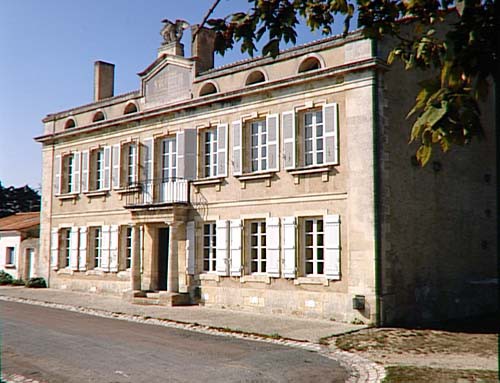It was on Aix Island where Napoleon spent his last days on French soil, July 12 to 15, 1815, before embarking for his exile. Settled into the commander's house that he himself had ordered constructed in 1808, the Emperor composed the rough draft of the famous letter that was placed under the protection of the British government.
This house was purchased in 1926 by Baron Napoleon Gourgaud, the great grandson of General Gaspard Gourgaud, a companion of Napoleon on Saint-Helena. Transformed into a Napoleonic museum and opened to the public in 1928, the dwelling was given to the national museum system in 1933 by the Baron and Baroness Gourgaud. Since 1959, it has been united with the National Museum of the Malmaison and Bois Préau Castles.
The house is the most important on the island. It is surmounted by an attic with half-circle skylights set into it and opens with a peristyle of doric columns. The pediment and eagle which top the house were added under the Second Empire. One can read this inscription: “To the memory of our immortal Emperor Napoleon I, July 15, 1815. Everything was sublime in him: his glory, his setbacks. And his name hovers over the universe.”
The museum gathers together the collections of Baron Gourgaud. It includes approximately ten rooms dedicated to the memory of General Gourgaud, the Consulate, the imperial family, the history of the Empire from the coronation to Waterloo, Aix and Saint-Helena Islands, the Return of the ashes and finally the Napoleonic Legend.
In the line of rooms, celebrated pieces recall the epoch. “The Proclamation of the Cisalpine Republic” by Laffite, “The Entrance of French Troups into Rome” by Bagetti, the bust of General Bonaparte by Corbet, the busts of the Emperor by Chaudet and of Empress Josephine by Chinard, the portrait of Pope Pie VII by David, “Napoleon, King of Italy” by Appiani, etc. Numerous keepsakes evoke the imperial entourage, and notably the high dignitaries presented in an interesting portrait gallery. The Emperor's bedroom has retained its 1815 state in spite of the disappearance of most of its furniture. It was here that Napoleon wrote the rough draft of the letter in which he surrendered to the prince regent of England. A copy of it is exhibited here. Through the garden windows an ash tree that was grafted onto an elm by the Emperor at the time of his inspection of the fortification work in 1808 can be seen near a bust of Napoleon.
A little bit further down on the rue Napoleon is the African Museum where the Gourgaud Foundation assembled the hunting collections of Baron Gourgaud. One can see there the naturalized dromedary that Napoleon rode during the Egyptian campagne and a diorama depicting Saint-Helena birds.
National Napoleonic Museum of Aix Island


